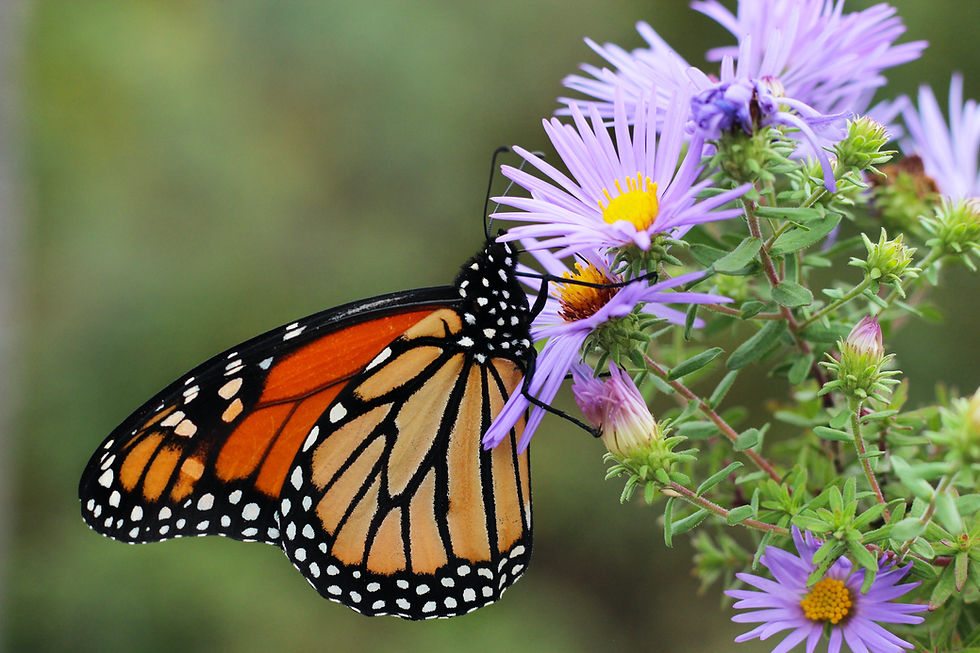Planting and Care
- VanderWaal

- Mar 27
- 3 min read
Updated: Apr 5
One of the most common questions we get asked is simply "What is the right way to plant?" It's a question I love to answer because I believe this is the one chance we have to give our plants the best chance at a strong first growing season.

Over the years of being a part of planting projects, I have seen it all. Tiny plugs planted en mass in an effort to win by volume, juvenile plants dropped into cylindrical tubes drilled by bulb augers in soil one step down from concrete, and plants tucked into a still thriving green flats of turf. While I have grown to fully trust native plants and their ability to overcome less than ideal settings, I also trust that setting your planting up for success will yield just that, success.
Below are a few things to keep in mind while you are installing your new plantings.
Tip #1 - Right Plant, Right Place
This mantra has been around for some time and rightfully so! Plants have preferences that when met allow your plant to perform better. If a plant prefers dry soil and you plant it in wet soil - it will probably grow, just not very vigorously and not to its true potential. Plant sun plants in sun and shade plants in shade. Even though it sounds simple, it can be hard to fight the urge to simply put whatever plant we want in whatever space we want.
Tip #2 - Give Plants Room to Breath
The best things in life are worth the wait. Give plants the proper spacing they need to reach maturity without choking each other out. Plants that are planted too densely will compete for soil space and other resources, that in turn limit their ability to reach their potential as a plant. As tempted as it may be to plant densely to fill the space and have the instant gratification, don't do it. I am one of those people, so trust me I understand the urge! You will be so much happier with your planting in two or three years if you give each plant the proper space when planting.
Tip #3 - Enjoy the Process
There are hundreds if not thousands of resources about planting available online. Don't allow yourself to be overwhelmed and panicked by all the instructions you read. Native plants are very forgiving and even if you make a few mistakes you will find that they can still be an awesome contributor to your pollinator and wildlife populations on your property. We always learn more from our mistakes!
Tip #4 - How you Plant & Water Matters
1. Soil amendments and extremely rich soils are not necessary for success. That being said a soil amendment such as compost can help with the vigor of the plant as it establishes.
Water your plants well before transplanting.
Don't pull the plant out of the container, gently work it out by squeezing the sides of the pot.
Make your a hole a minimum of twice the size of the container you are planting.
Give your plants a deep soak for their initial watering. Water is critical for the entire first growing season, as your plants will be working hard to establish a strong and hardy root system. Make sure your plants don't have the chance to dry down to a drought stage for the first month or two after planting. After the first growing season your plants should be able to thrive without supplemental water.
Tip #5 - Draw Your Map to Success
Remember to have fun with the planning process! Keep your taller plants to the back of the bed and shorter plants to the front as you plan the sequence of your planting. Plan to have plants blooming in all parts of your planting at different times by creating a bloom calendar. Some people choose to distribute singles of each species throughout their planting while others like to incorporate mass plantings or drift plantings. Mass plantings create powerful visual weight when they are in full bloom, and dispersing the species evenly allows for more pleasant visual of the mixed species.
Happy Planting!
If you would like to ask more specific questions or simply prefer a project specific conversation please feel free to email or call!



Comments